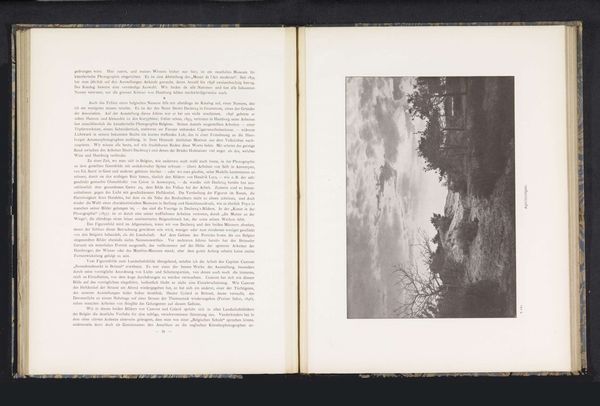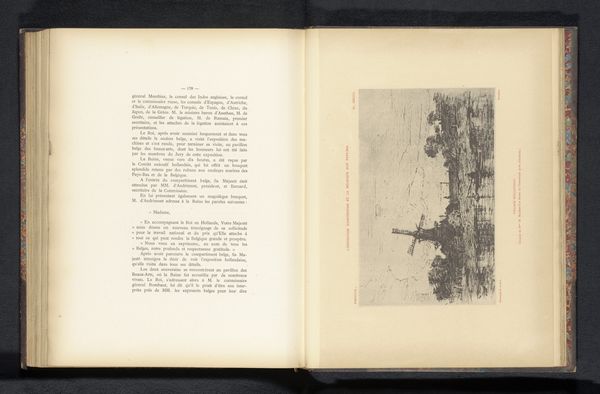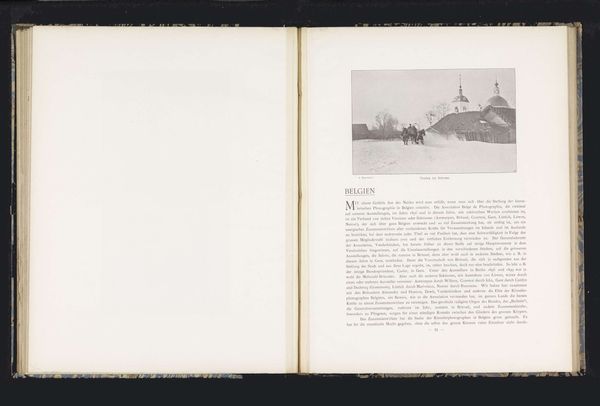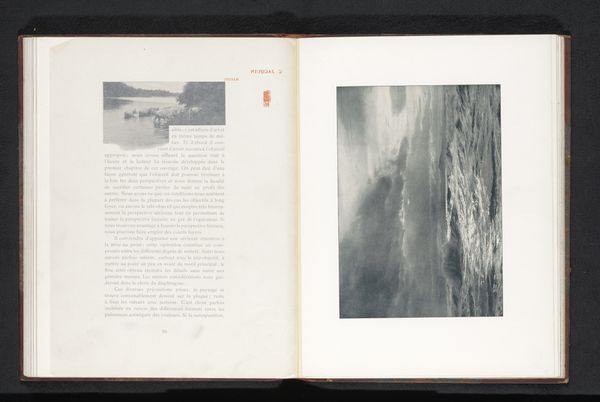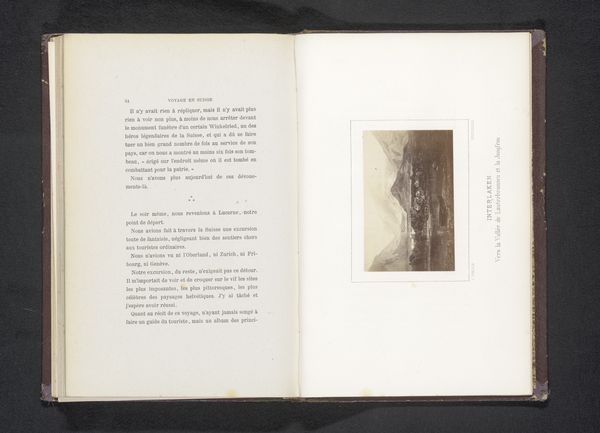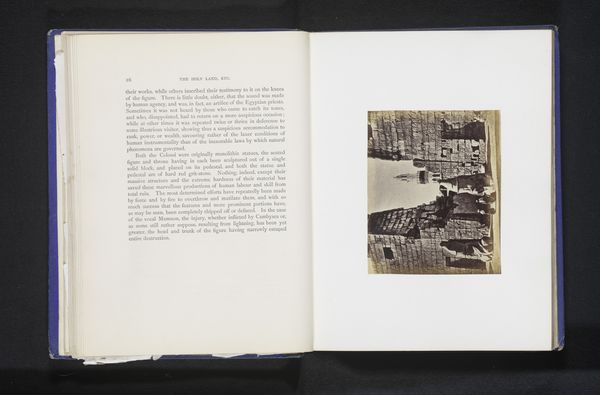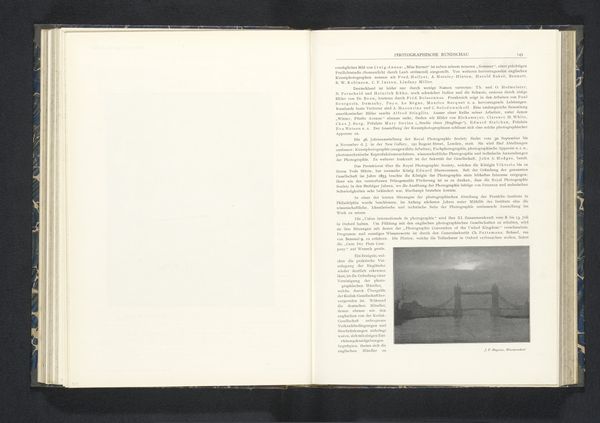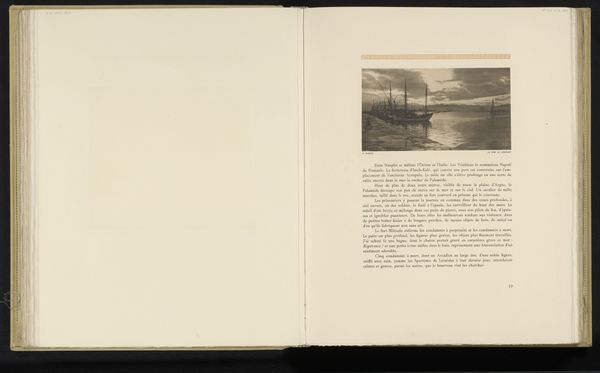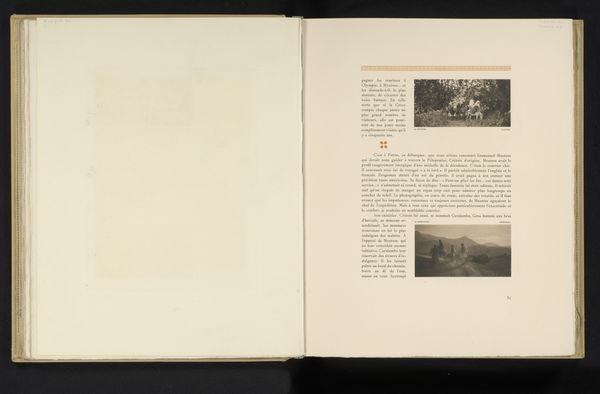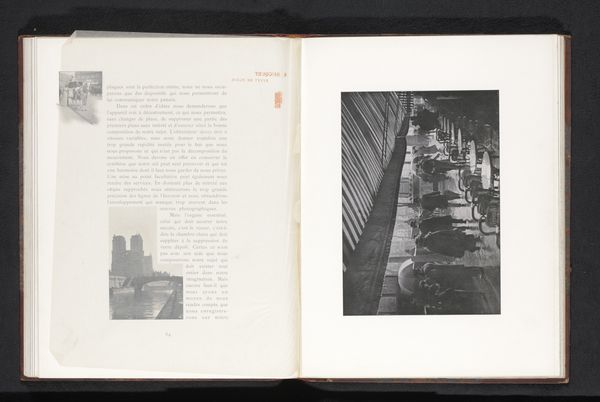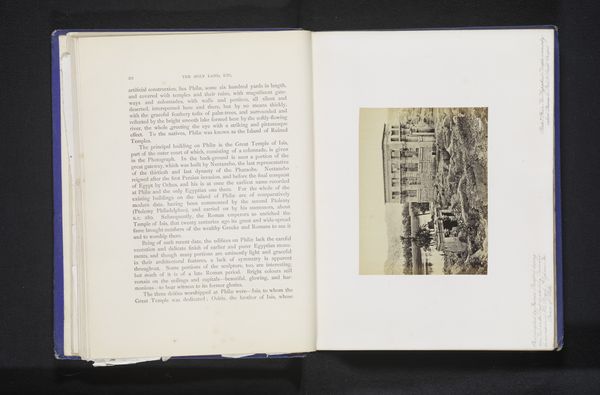
Dimensions: height 138 mm, width 170 mm
Copyright: Rijks Museum: Open Domain
Curator: What a stark image, yet it pulses with life. This is titled “Vrouw op straat naast een marktkraam”, or “Woman on the street next to a market stall” by Étienne Wallon, and we believe it was created before 1900. The medium used appears to be gelatin silver print. Editor: It’s grey and sooty. There's this oppressive fog blanketing everything, which frankly gives it a melancholy air. Almost feels post-industrial and grim. Curator: That resonates. Gelatin silver prints became increasingly common in that era due to their sharp detail and tonal range. And they were easier to mass-produce, offering some insight into photography's cultural role as an agent of documenting societal scenes in the industrial era. The photographer could easily capture a bustling marketplace or other environments they chose and circulate that image widely. It certainly offered increased reach in spreading social consciousness. Editor: Right, the photograph feels as if it’s meant for circulation and viewing for other eyes than just that of the market dwellers depicted. But it also strikes me that the material choices aren’t accidental to the impact. Using the gelatin silver, creating a repeatable medium of street scenes normalizes the kind of work happening on that street. These market laborers are memorialized, in some ways, in a medium for widespread consumption. What's that imply for our role in this act of viewership? Curator: That's a powerful connection. Wallon has indeed immortalized a specific moment within a community. There’s a symbolic significance, too. We are not just passively observing the working class on that street. The work also asks how meaning is made through the gaze that connects the work of art, artist, and the public. Editor: I agree. Reflecting on what gelatin silver made available for that day's consumer society makes me consider how social documentary both memorializes an underrepresented scene but does so through an act of mass production. Curator: Indeed, thank you. I think this examination has really clarified my understanding of both photography’s role in documenting society but, at the same time, producing consumable imagery of daily existence. Editor: Yes, now I can’t help but see that the very materiality shapes what social memory can be activated in photographic viewing practices, as well.
Comments
No comments
Be the first to comment and join the conversation on the ultimate creative platform.

